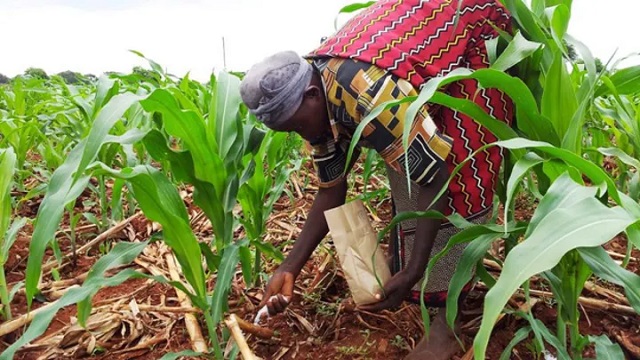
It requires understanding of challenges, clear vision for meeting them, and commitment to solutions
COMMENT | Safia Boly and Omid Kassiri | The COVID-19 pandemic, compounded by supply-chain disruptions and surging inflation, has highlighted the fragilities of Africa’s food systems, leading to a 60% increase in hunger across the continent in 2020 alone. And climate change, which is expected to degrade freshwater ecosystems and arable lands, rendering vast areas of Africa uninhabitable, will only make things worse.
While the pandemic and the war in Ukraine have exacerbated global food insecurity, throwing millions into extreme poverty and reversing decades of progress, the situation is even more dire in lower-income African countries. The continent’s population has reached 1.4 billion and could double by 2050, while agricultural productivity, despite improvement, remains significantly below global benchmarks. This has forced governments to rely more on food imports, pushing up prices.
But there are some bright spots. Ethiopia, Morocco, and Rwanda, for example, have managed to boost agricultural productivity by defining a vision for their domestic industries, bringing together public and private stakeholders, building the necessary infrastructure, and engaging in continuous learning and adaptation. As a result, these countries have increased agricultural output, improved food security, raised farmers’ incomes, and strengthened local food systems’ resilience to external shocks.
Consider Ethiopia, where domestic yields have increased by 76%, and total food production has risen by 50%, since the establishment of its Agricultural Transformation Agency in 2010. According to ATA estimates, agricultural reforms have saved 150,000 people from starving to death, reduced the number of undernourished Ethiopians by 11.5 million, and lifted roughly 286,000 people out of poverty.
Similarly, Morocco’s Plan Maroc Vert (Green Morocco Plan), launched in 2008 to modernise domestic farming and to promote sustainable economic growth, has revitalised the agriculture sector. The Agricultural Development Agency, set up to support the plan’s implementation, estimates that agricultural GDP grew 5.25% a year from 2008-18, faster than the economy as a whole (3.8%). This resulted in a 117% rise in agricultural exports and 342,000 new jobs. Watershed management has also improved, with drip-irrigation systems quadrupling to 542,000 hectares.
Since 2004, Rwanda has been developing and implementing its Strategic Plan for the Transformation of Agriculture (PSTA). The International Food Policy Research Institute estimates that every dollar that the government spends on agriculture corresponds to a $2.05 gain in GDP, implying that the program delivered $730 million in economic gains between 2018 and 2021, helping to lift 1.1 million people out of poverty. Rwanda’s Strategic Plan has also improved watershed management and soil conservation.
What these three countries have in common is a deep understanding of the challenges ahead, a clear vision for meeting them, and a strong commitment to developing the effective governance mechanisms needed to implement solutions. Building on these examples, we have identified four key principles that could help other African countries successfully transform their own agriculture sectors.
For starters, consistent planning is critical. Governments must establish clear mandates, spell out their priorities, align policies, and mobilise resources. In Rwanda, the PSTA’s mandate was to use market-led growth to overhaul the country’s largely subsistence-based agriculture. In preparing the latest version of its plan, known as PSTA 4, the government worked with development partners to devise a forward-looking strategy that aligned with Rwanda’s commitments under the African Union’s Malabo Declaration and the United Nations Sustainable Development Goals. PSTA 4 focuses on encouraging private-sector investment and shifting to higher-value agricultural commodities to increase profits and capture productivity gains, in line with the vision that the Rwandan government set out nearly 20 years ago.
Second, to ensure that projects are sustainable over the longer term, policymakers must secure the backing of top political leaders, relevant local governments, and other stakeholders such as development partners and civil-society groups. In Ethiopia, then-Prime Minister Meles Zenawi publicly backed the establishment of the ATA. Subsequent governments have continued to support the plan, even giving the ATA priority access to scarce hard currency to fund imports.
Third, by structuring agricultural plans around a fit-for-purpose organisation, governments could create a governance structure that enables skilled staff to work with all stakeholders in leading the transformation effort. The ATA, for example, combines local and international expertise and coordinates with ministries responsible for land, water, agriculture, and industry to develop and implement policy.
Lastly, a results-oriented implementation process could lead to better outcomes. By developing a deep knowledge base of the agricultural sector and then adapting as new data emerge, governments can identify quick wins and programs with high potential for expansion. Morocco, for example, devised specific plans for 16 regions and a roadmap setting out more than 700 projects. To track progress, officials monitored specific performance indicators such as yield and productivity for livestock, poultry, and other sectors.
Africa, of course, is incredibly diverse. Its countries vary in language, geography, population size, political systems, and economic policies, ruling out a one-size-fits-all approach. But Ethiopia, Morocco, and Rwanda, though very different from one another, have managed to improve food security and economic well-being by adhering to the four principles set out here. Their success shows that a sustainable, climate-resilient continent is not only possible but well within reach.
******

Safia Boly is Executive Director of the Nairobi-based African Agriculture Transformation Initiative. Omid Kassiri is a partner in McKinsey & Company’s Nairobi office.
Copyright: Project Syndicate, 2023.
www.project-syndicate.org
 The Independent Uganda: You get the Truth we Pay the Price
The Independent Uganda: You get the Truth we Pay the Price



